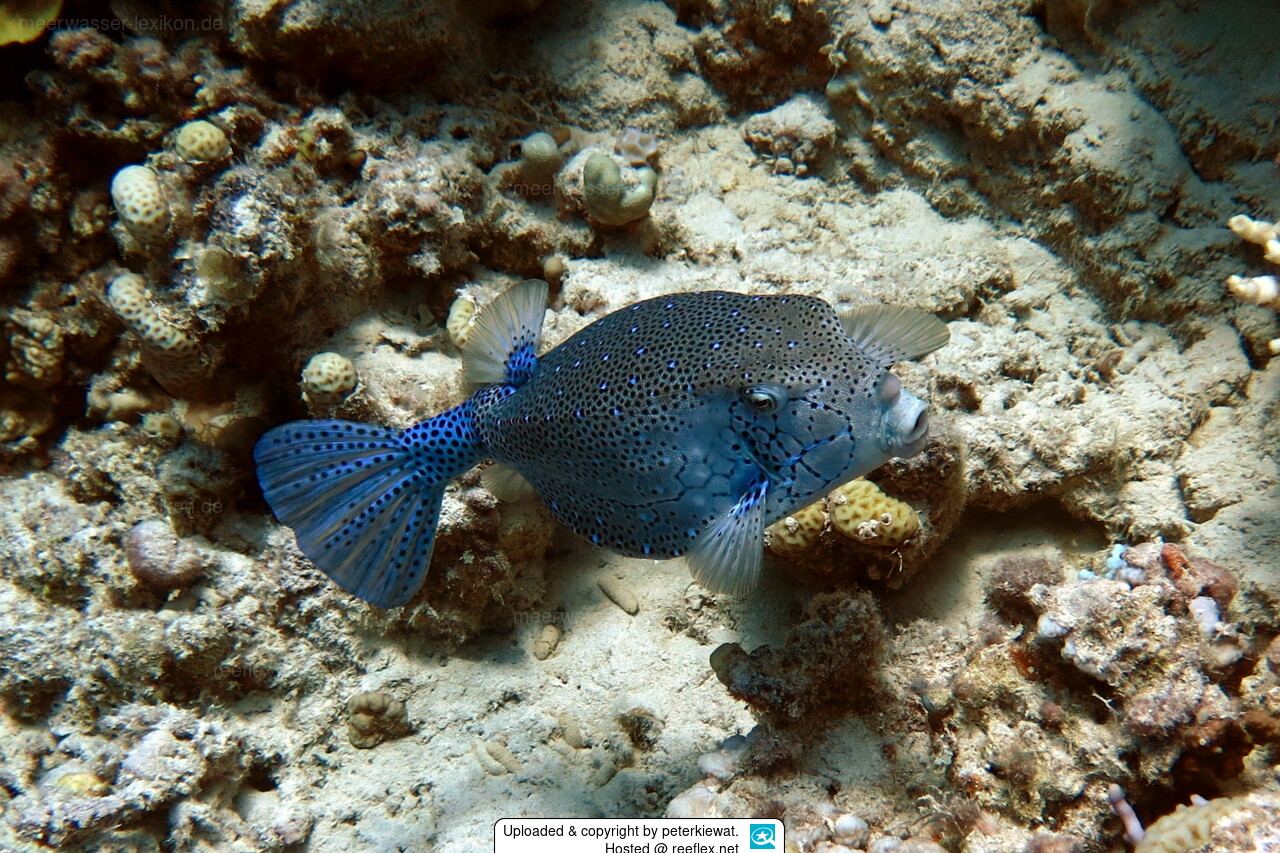Info
The common boxfish (lat. Ostracion cubicus) prefers to live in lagoons and sheltered outer reefs, usually at depths of one to about 40 meters. Juveniles often hide in the branches of Acropora stony corals. It is a solitary fish!
$save shrimp
Ostracion cubicus feeds on algae and the small animals that live in them, bottom-dwelling invertebrates, but also mollusks, sponges, bristle worms, various crustaceans. Larger specimens are also reported to eat fish.
Like most boxfish, this species changes color and shape as it grows. Large adult fish are pale yellowish-gray to bluish or purplish-brown with a yellow tail base, yellow markings between the body plates, remnants of dark spots on the body and small black spots on the fins - and a bony hump above the mouth.
Immature fish are reddish to yellowish-brown with clusters of dark spots surrounded by blue or black spots with pale edges, and black spots on the fins.
Juveniles are bright yellow with black spots on the head and body.
Husbandry information by Claus-Peter König
Behavior: A loner.
In the long run incompatible with other boxfish, otherwise very compatible with other fish. Lives together with a nose moray and a pair of seahorses.
Appearance: The young are yellow with black spots. As they grow, the black dots become circles filled with white.
In addition, the animal becomes darker. Adult animals vary in color between dark yellow and a bluish cast.
The shelf life is described in the literature as difficult.
I cannot confirm this. Provided that the water values are correct to some extent and flow-free zones are present in the aquarium, also balanced (not too much!) is fed, the boxfish feels very well.
There should also be hiding places and areas with fine coral grass.
Experiences: After settling into the aquarium, he put his tail on for a few days. A sign that he did not feel well. However, this gave itself quite soon. Now he always spreads his tail for swimming and folds it only for eating or maneuvering between the stones.
Important are stones on which he can wear out his strong teeth.
Caution: Larger animals like to nibble at the technique! Therefore install everything "bite-safe".
I know of a case where a boxfish bit the glass heating rod and grilled itself and its fellow inhabitants...
$case fish
$fish poisoning
A really droll and lovable fellow.
You could watch him for hours as he navigates among the rocks, like a helicopter.
Food statement by Claus-Peter König
A real omnivore!
So far I have not found anything that he has rejected. From flake food over mysis, up to algae, mussel meat, bristle worms and overbrowned salad.
Synonymised names:
Ostacion cubicus Linnaeus, 1758 · unaccepted > misspelling
Ostracion argus Rüppell, 1828 · unaccepted
Ostracion cubicua Linnaeus, 1758 · unaccepted > misspelling
Ostracion cubicus Linnaeus, 1758 · unaccepted
Ostracion tuberculatus Linnaeus, 1758 · unaccepted







 peterkiewat
peterkiewat


























